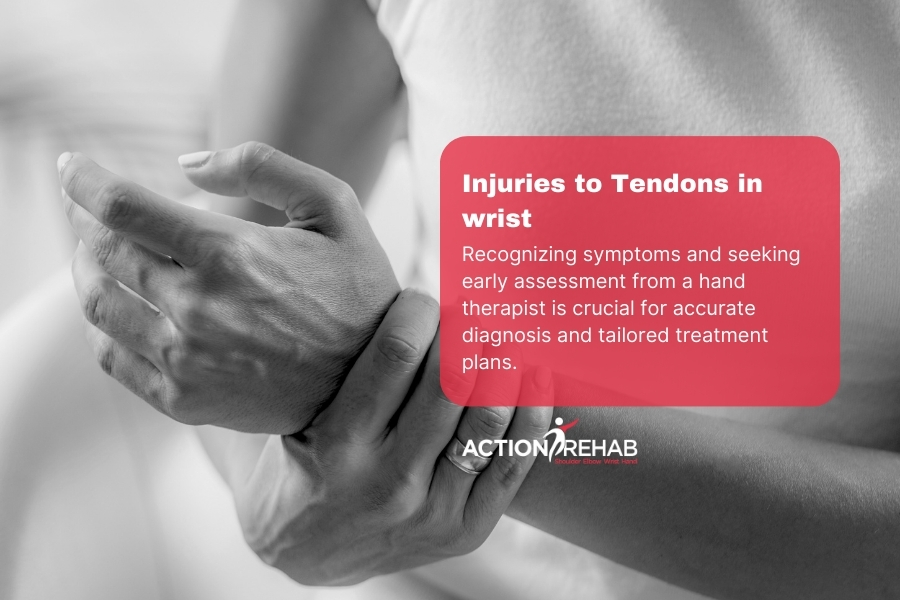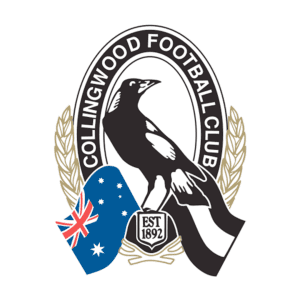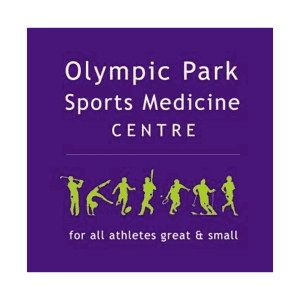Navigating the Tendon Landscape: Insights into Tendinopathy and Wrist Functionality
Tendons are the connections between your muscles and bones in your body. According to Andres and Murrel in 2008, Tendinopathy is a broad term used to describe a painful condition in response to overuse of tendons. Their research also suggests that there is very little inflammation in and around the tendon and the injury in fact results in a thickening and stiffness to the tendon (Sawyer and Tadi, 2019).
There are many tendons that cross the wrist to move, control and support the wrist but some of the most clinically important tendons are the Extensor Carpi Ulnaris (ECU) and Flexor Carpi Ulnaris (FCU).
Understanding the Role of ECU and FCU in Wrist Movement
The ECU muscle originates on the lateral or outside part of the elbow and runs down the forearm with some other extensors of the hand and wrist to attach via its tendon onto the back of the hand, at the base of the fifth metacarpal bone. This is the base of the set of bones that make up your little finger. The FCU muscle originates on the medial or inside part of the elbow and runs down the forearm with some other flexors of the hand and wrist to attach via its tenson onto the front of the wrist and hand, specifically the hook of hamate and pisiform bone in the wrist and base of fifth metacarpal in the hand.
As these two muscles approach and cross the wrist they are encompassed by a tendon sheath or synovial sheath which is a fluid filled tunnel designed to reduce friction of the tendon when crossing through tight spaces or near a bone. This tendon sheath may also become injured resulting in tenosynovitis which is a more acute injury to the tendon-sheath complex.
The ECU muscle and tendon are responsible for causing extension or backwards bend of the wrist with ulnar deviation or bend towards the little finger side. It works in conjunction with the ECR on the thumb side to provide a powerful movement of the wrist as well as dorsal and ulnar sided stability to the wrist. During actions which require repeated wrist extension or resistance to wrist flexion this tendon is put under a large amount of strain and may become pathological. There may occur a subluxation which results in the tendon flicking over the distal ulnar during repeated wrist movement (Campbell, et al., 2013).
Symptoms of ECU and FCU Tendinopathies
Tendinopathy may be identified in the ECU tendon by localised tenderness to touch on the tendon on the back of the wrist, pain on resisted wrist extension and ulnar deviation movement, a snap or pop sound during wrist movement or weakness in wrist extension. If there is painless weakness in the wrist, this may be due to a complete rupture of the tendon.
Assessment of ECU and FCU Tendinopathies
Imaging such as ultrasound or MRI could be used to diagnose ECU tendinopathies but your hand therapist should be able to diagnose based on clinical history, reported symptoms, palpation and resistance testing of the wrist.
Treatment of ECU and FCU Tendinopathies
The best treatment for tendinopathy includes appropriate rest, cryo/thermotherapy, activity modification and appropriate loading.
- Rest: Hand therapists assist with resting the hand and wrist by using a variety of splinting techniques, the most common is a wrist and forearm based splint that will support the wrist and offload the pathological tendon.
- Thermotherapy: Heat therapy will assist in reducing the acute pain, increase vascularity and blood flow to the area to increase nutrients for tendon healing and will provide a more supple joint for less resistance to movement by the tendon and facilitate rehabilitation.
- Activity modification: The wrist splint will allow the wearer a reasonable amount of movement but will restrict certain movements which may irritate the tendon further. The hand therapist will also provide advise as to correct wrist positioning, improve ergonomics of work station and provide assistive equipment to be used in every-day life. By changing the activity that may have caused the injury in the first place we can treat it and prevent it from occurring again.
- Appropriate loading: Once the tendon has rested and there has been a reduction in acute pain it is vital that the tendon is appropriately loaded so that is can strengthen and manage the load of the activity that may have caused the injury, better. The hand therapist may use a collection of isometric exercises (the muscle contracts but does not lengthen or shorten), eccentric exercises (the muscle contracts during lengthening) or concentric exercises (the muscle contracts and shortens).
- Other methods: There are other treatments for ECU tendinopathy such as extracorporeal shockwave therapy, kinesiotaping, corticosteroid injection, nitrate patches and in severe cases, surgery. Many of these have their pros and cons and show variable success in the overall treatment of wrist pain.
Research is pointing to a more eccentric based exercise program which not only improves the strength, contractility and endurance of the tendon but may cause structural changes on a cellular level to form a healthier tendon (Andres and Murrell, 2008).
How Hand Therapists Tackle ECU and FCU Tendinopathy
Tendinopathy is a common injury to the wrist due to modern loading and sedentary lifestyle and may cause a significant amount of pain. It is often difficult to treat due to the multifactorial nature of the injury and its treatment. Due to their training is assessing and diagnosing as well as ability to find the root cause of the injury, a hand therapist will be best positioned to give you the best chance of recovery from ECU and FCU tendinopathy.

Final thoughts on Injuries to Tendons in wrist
In conclusion, understanding the intricate role of tendons, particularly the Extensor Carpi Ulnaris (ECU) and Flexor Carpi Ulnaris (FCU), sheds light on the complexities of tendinopathy and its impact on wrist functionality. Recognizing symptoms and seeking early assessment from a hand therapist is crucial for accurate diagnosis and tailored treatment plans.
Action Rehab offers comprehensive solutions for ECU and FCU tendinopathy, emphasizing rest, thermotherapy, activity modification, and appropriate loading to facilitate recovery. The experience of hand therapists, backed by research-driven approaches, ensures a holistic and effective path to reclaiming wrist health. Consider Action Rehab for unparalleled hand therapy solutions tailored to your wrist injuries and embark on a journey to optimal recovery.
References:
- Andres, B. M., & Murrell, G. A. (2008). Treatment of tendinopathy: what works, what does not, and what is on the horizon. Clinical orthopaedics and related research, 466(7), 1539–1554. https://doi.org/10.1007/s11999-008-0260-1
- Sawyer E, Tadi P. Anatomy, Shoulder and Upper Limb, Forearm Extensor Carpi Ulnaris Muscle. [Updated 2019 Mar 19]. In: StatPearls [Internet]. Treasure Island (FL): StatPearls Publishing; 2019 Jan-.
- Campbell D, Campbell R, O’Connor P, Hawkes R. Sports-related extensor carpi ulnaris pathology: a review of functional anatomy, sports injury and management. Br J Sports Med. 2013;47(17):1105–11.



















